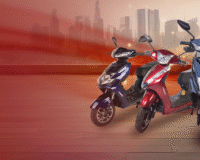If you’ve been thinking about buying an electric vehicle (EV), 2025 might just be the best time to take the leap. India’s EV market is growing rapidly, with more models, better battery tech, and charging networks expanding across cities. But here’s the real game-changer – government subsidies and easy loan schemes are making two wheeler electric scooters more affordable than ever before.
Still, the process can feel confusing. What subsidy applies in your state? Which banks actually offer good loan terms for high speed electric scooter in India? How do you calculate your long-term savings? Let’s break it down step by step, so you can save more while riding into the electric future.
Why Loans for EVs Are Different
A few years ago, financing an EV wasn’t as straightforward as getting a petrol bike loan. Lenders were cautious, EV resale values weren’t clear, and customers were skeptical. Fast forward to 2025, and the scenario has flipped.
- Banks and NBFCs now offer dedicated EV loan products, often at lower interest rates than conventional two-wheeler loans.
- Loan-to-value (LTV) ratios are higher – meaning you can finance up to 90–95% of the on-road price in many cases.
- Tenures are flexible, ranging from 12 months to 5 years, giving first-time EV buyers breathing space.
- So, instead of paying a heavy upfront amount, you can spread the cost comfortably – without losing out on subsidies.
Central Subsidies: The FAME-II Advantage
The biggest push for two wheeler electric scooter adoption in India has been the FAME-II scheme (Faster Adoption and Manufacturing of Hybrid and Electric Vehicles). Extended into 2025, this scheme offers direct financial incentives that cut down the vehicle cost at the time of purchase.
For two wheeler electric scooters like e-Sprinto, the subsidy usually depends on the battery capacity (₹ per kWh). This means the bigger and more efficient the battery, the higher your savings. On average, buyers can expect:
- ₹15,000 per kWh subsidy, capped at around 40% of the vehicle cost.
- Direct reduction in the ex-showroom price – no paperwork hassles for the buyer, since dealers adjust it upfront.
- In simple terms, if your EV costs ₹1.2 lakh, subsidies can reduce your purchase price by ₹25,000–₹40,000 depending on the model.
State-Level Perks You Shouldn’t Miss
Apart from the central subsidy, many states in India have their own EV policies, and these often stack on top of FAME-II benefits. Some examples from 2025:
- Delhi: No road tax or registration charges on EVs.
- Maharashtra: Additional state subsidy, scrappage incentives for exchanging old petrol bikes.
- Gujarat & Tamil Nadu: Special purchase incentives plus reduced electricity tariffs for EV charging.
- Karnataka & Telangana: Focus on charging infrastructure with affordable charging rates.
- Checking your state EV policy before buying can easily help you save an extra ₹10,000–₹30,000.
How to Combine Loans and Subsidies Smartly
Here’s where many buyers go wrong: they assume subsidies reduce loan eligibility. In reality, most banks calculate the loan amount after subsidy adjustments, so your EMI goes down too.
Example:
EV ex-showroom price = ₹1,20,000
Subsidy benefit = ₹25,000
Net price = ₹95,000
Loan @ 90% LTV = ₹85,500
This means your monthly EMI could be as low as ₹2,000–₹2,500, depending on tenure and interest rates.
An extra tip – use the subsidy to reduce your principal loan amount instead of stretching for add-ons. This keeps your EMIs low and manageable.
Long-Term Savings You Can Expect
The real win with EV ownership isn’t just the lower purchase price – it’s the running cost. An average petrol scooter in India costs ₹2.5–3 per km (fuel + maintenance). An electric scooter like e-Sprinto? Around ₹0.25–₹0.30 per km.
Over five years, a daily commuter covering 40 km a day can save nearly ₹1 lakh in fuel alone. Add in fewer maintenance visits (no oil changes, fewer moving parts), and the savings keep stacking up.
When you combine this with loan financing and subsidies, the EV practically starts paying for itself.
How to Maximize Your Savings in 2025
- Research State Policies – Each state offers different incentives. A little homework can save you thousands.
- Pick the Right Loan – Compare EV loan schemes from banks and NBFCs; look for lower interest rates and zero foreclosure charges.
- Apply Early – Subsidy budgets are limited. Some states operate on a first-come, first-serve basis.
- Charge Smart – Use home charging during off-peak hours for the cheapest electricity rates.
- Ride More, Save More – The higher your daily usage, the faster you recover your investment compared to petrol.
Final Word
Switching to a high speed electric scooter in India in 2025 is no longer just about sustainability – it’s also about financial sense. With central subsidies, state incentives, and affordable loans, the barrier to entry has never been lower. Hence, there are multiple benefits of owning an EV.
At e-Sprinto, we believe in making electric mobility accessible and practical for every Indian rider. Whether it’s through smart financing, robust battery tech, or a smooth ride experience, our scooters are built to give you more value with every kilometer.
Your EV journey doesn’t have to be expensive – it just has to be smart.






